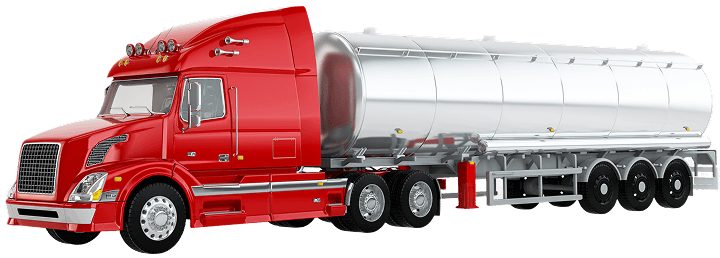Choosing the Best Path for Driver Training
For Whom Is This Written: This guide is designed for fleet supervisors, safety managers, and HR personnel who oversee commercial driver hiring or training under FMCSA regulations.
Background
With driver shortages and increasing turnover, companies are looking for better strategies to train and retain commercial drivers. Two alternatives often considered are developing an in-house CDL training program or using third-party commercial vehicle driving schools. Each option has its pros and cons. The purpose of this guide is to serve HR and operations leaders as they evaluate outsourcing CDL training vs. internal training programs based on cost, control, and efficiency.
In-House CDL Training Programs
Companies like Sysco and Walmart have invested significantly in in-house CDL training programs. These programs have improved retention and lowered long-term hiring costs. However, the investment, in terms of upfront costs and the management needed to properly regulate the training, can be daunting and often impossible for smaller companies.
Pros:
- Customization and Control: Full authority over the curriculum and training facilities ensures drivers are trained on your schedule and per your exact safety and service standards.
- Quality Assurance: Training that is company-specific with close oversight.
- Retention: Company-sponsored CDL training benefits often include job incentives and work contracts, which have been shown to increase driver loyalty.
- Internal Mobility: Existing employees can be upskilled by this training, which provides options within a visible career path and reduces the demand for outside recruiting.
- Strategic Investment: Over time, these in-house CDL programs may reduce hiring costs.
Cons:
- High Startup Cost: Trucks, facilities, instructors, and compliance with FMCSA rules require significant upfront investment (although this can be amortized if there are many drivers to train each year).
- Operational Complexity: Administering a school adds significant expense and requires careful attention to compliance regulation.
- Capacity Constraints: Limited geographic reach and class sizes can impact the supply of available drivers.
- Attrition Risk: Dropouts or early departures yield unreplenished costs or investment with no return.
Third-Party CDL Training (Outsourced Schools)
Pros:
- Low Overhead: Cost is limited to tuition (or reimbursement) unless travel expenses are also required
- Quick Launch: Companies can partner with schools immediately instead of significant in-house program inception and development needs.
- Training Expertise: Schools have experienced teachers who must meet FMCSA standards.
- Scalability: Companies can train more drivers across vast geography due to the number of schools available nationwide (although availability varies by jurisdiction; see below).
- Flexible Sponsorship: Investment levels can be tailored per the number of trainees.
Cons:
- Availability Varies by Jurisdiction: Some states have many schools per 100,000 population; others have only a few. Logistical and travel expenses may be incurred if available schools are not nearby.
- Less Control: Companies cannot instill their own culture and create their own specialized curriculum. Course schedules and availability of slots are under the school’s control.
- Customization Limits: Schools don’t teach company-specific procedures or equipment.
- Time Variability: Some programs (especially community colleges) can take six months or more to complete.
- Retention Challenges: Without training contracts, drivers may leave quickly post-hire.
Comparison:
- Cost-Per-Hire: In-house has higher startup costs but potential long-term savings; outsourcing offers lower entry costs, but tuition expenses can vary per sign-up.
- Time-to-License: In-house can offer a faster learning process; outsourcing depends on the school schedule.
- Quality Control: In-house enables consistent company-specific training; outsourcing can vary by school (main objectives are necessary per national standards, but differentiation occurs per program).
- Scalability and Reach: Outsourcing allows broader geographic reach; in-house may be limited to specific locations.
- Retention: In-house trainees are statistically more committed because of contract offerings and/or internal promotion opportunities.
Real-World Examples
Companies take different approaches to CDL training based on their goals and resources. Sysco, for example, created in-house driver CDL training focused on company culture retention. Walmart created a paid 12-week CDL training program to help current employees transition into driving roles. Halvor Lines outsources its training to third-party schools but offers tuition reimbursement and guaranteed interviews to boost participation.
Key Takeaways
Choosing the right CDL training model depends on your company’s goals, resources, and needs. In-house programs provide greater control and cultural alignment and often yield stronger employee retention, but they come with higher upfront costs. Outsourced training offers faster implementation and flexibility, but that comes with less consistency in costs and corporate needs alignment. Many companies find success with a hybrid approach, combining external tuition reimbursement with internal finishing programs to achieve the best of both worlds.
By understanding these trade-offs, companies can develop a driver training program that supports growth, safety, and worker retention. Choosing the best path for training requires balancing cost, control, and efficiency to support your company’s needs and capabilities. The pros and cons outlined in this paper show that both in-house and third-party approaches have merit. The challenge for you is deciding which advantages matter most to your organization. If you value having drivers taught within your corporate culture, with guaranteed tenure and company-specific training (and you have the resources), an in-house CDL training program might be your best approach. If lower cost and less overall complexity are important, third-party CDL schools might be the best approach. However, keep in mind that many companies find their solution with a hybrid approach that captures the best of both worlds.
Factors like cost-per-hire, time-to-license, quality control, and flexibility (as we’ve compared) are crucial to making an informed decision. Choosing the training model that best aligns with your company’s priorities is key.
How Driving-Tests.org Can Help You with Either Choice
Whether you choose in-house training or third-party schools, Driving-Tests.org’s CDL Premium Corporate platform provides these advantageous features:
- Comprehensive CDL Test Preparation: Access to up-to-date practice tests and study materials aligned with FMCSA guidelines.
- Progress Tracking and Reporting: Easily track each driver’s progress and test results to streamline record-keeping.
- Multi-User Management: Add and remove drivers or training coordinators quickly; keep everyone accountable with assigned modules.
- Engaging Mobile-Friendly Content: Drivers can study on their own schedule, reducing classroom time and improving pass rates.
By integrating proven online learning tools with practical test preparation, your drivers will be well-equipped to pass their official knowledge tests in either an in-house or third-party school setting.
References
GlobeNewswire. (2022, December 6). Sysco opens its 10th CDL driver training facility. https://investors.sysco.com/annual-reports-and-sec-filings/news-releases/2022/12-07-2022-130331787
Campbell, C. (2023, January 19). Walmart offers driver training to workers in 400-plus stores. Trucking Dive. https://www.truckingdive.com/news/walmart-associate-to-driver-training-program-439-stores-fulfillment-centers/640663/
Indeed Editorial Team. (n.d.). Creating a paid CDL training program for your company. Indeed Hiring Resources. https://www.indeed.com/hire/c/info/paid-cdl-training-guide
Hire Velocity. (n.d.). Transportation recruiting: Seven stats to know. https://blogs.hirevelocity.com/transportation-recruiting-seven-stats-to-know-hire-velocity
Roadmaster Drivers School. (n.d.). CDL training: Community college vs. training school. https://www.roadmaster.com/blog/community-college-vs-training-school/
TruckingTruth. (n.d.). Company paid vs. private school CDL training – What’s your choice? https://www.truckingtruth.com/truckers-forum/Topic-6127/Page-1/company-paid-vs-private-school-cdl-training-whats-your-choice
Halvor Lines. (n.d.). CDL training programs. https://www.halvorlines.com/cdl-paid-training-program




